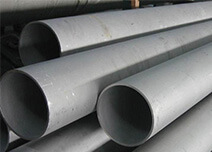- SITEMAP
- CONTACT US
- 8618267732328
News
Credibility ,the lifeblood of enterprise!
- Fittings
- Butt Welding Fittings
- Forged Fittings
- 180 Degree Elbows
- 90 Degree Elbows
- 60 Degree Elbows
- 45 Degree Elbows
- 30 Degree Elbows
- Equal Tee
- Reducing Tee
- Concentric Reducer
- Eccentric Reducer
- Lap Joint Stub End
- Outlets
- Cap
- Bend
- Cross
- Coupling
- Stainless Steel Lateral Tee
- Bellows Expansion Joints
- Flexible Metal Hose
- Non-Standard/Custom Fittings
- Bleed & Flushing Rings
- Types of Flanges
- Anchor Flanges
- Blind Flanges
- Expander Flanges
- High Hub Flanges
- Lap Joint Flanges
- Long Weld Neck Flanges
- Nipoflanges
- Orifice Flanges
- Plate Flanges
- Ring Type Joint Flanges
- Reducing Flanges
- Slip On Flanges
- Socket Weld Flanges
- Spectacle Blind Flanges
- Square Flanges
- Spades & Ring Spacers
- Threaded Flanges
- Welding Neck Flanges
Bi-Metallic Corrosion Galvanic Corrosion By yaang.com
Bi-Metallic corrosion Galvanic Corrosion is the additional corrosion that occurs when dissimilar metals are in contact in the presence of an electrolyte. The corrosion of a metal, the anode, results from the positive current flowing from the anode to the less reactive (more noble) metal, the cathode, through the electrolyte.
This process is similar to the conventional corrosion of a single, uncoupled metal but generally proceeds at a higher rate depending on the difference in electrochemical reactivity of the anode and cathode metal.
The requirements for bi-metallic corrosion are as follows:
- An electrolyte bridging the two metals
- Electrical contact between the two metals.
- A difference in potential between the metals to enable a significant galvanic current
- A sustained cathodic reaction on the more noble of the two metals.

The degree of bi-metallic corrosion is affected by the electrolyte pH and conductivity. The intensity of the corrosion can increase with the conductivity of the electrolyte. Typical values of conductivity of various fluids are listed below;
| Distilled Water | 0.5-2 μS/cm |
| Stored Distilled Water | 2-4 μS/cm |
| Supply Water | 50-1500 μS/cm |
| Sea Water | 50,000 μS/cm |
| Sat. Sodium Chloride | 250,000 μS/cm |
| Sulphuric Acid | up to 800,000 μS/cm |
Bi-metallic corrosion is seldom a problem when the metals are immersed in pure water.
Where contact between dissimilar metals cannot be avoided the following steps should be considered
- Select metals that are close together in the galvanic series for the relevant environment
- Avoid relatively small areas of the less noble metal and large areas of the more noble metal
- Insulate the metals from each other
- Exclude electrolyte from around the bimetallic junction e.g painting
- Paint both metals where possible: if impractical paint the most noble metal
- Provide additional corrosion allowance on the less noble metal
- Apply compatible metal or sacrificial metal coatings
- If electrical insulation is used to minimise the risk, then test for the insulation quality as part of maintenance regime
Reference Oxidation Reduction
Galvanic corrosion is driven by the voltage potential between two electrically connected conductors ( To minimize this form of attack, materials in electrical contact, if required, should be selected so as to minimize their relative potential.
The galvanic series of metals lists common materials in order of their electrical potential relative to a recognized standard. Materials widely separated on this list will rapidly corrode in the presence of electolyte (e.g. Seawater) when in electrical contact, the anodic material suffering rapid material loss. Materials close together on this list will suffer less damage due to corrosion.
- Anodic - Least Noble
- Magnesium
- Magnesium Alloys
- Zinc
- Cadmium
- Aluminum
- Mild Steel , Wrought Iron
- Cast Iron, Low Alloy High Strength Steel
- Chrome Iron (active)
- Stainless Steel, 430 Series (active)
- Stainless Steel 302, 303, 321, 347, 410,416, (Active)
- Ni - Resist
- Stainless Steel 316, 317, (Active)
- Aluminum Bronze
- Hastelloy C (active) Inconel 625 (active)
- Titanium (active)
- Lead - Tin Solders
- Lead
- Tin
- Inconel 600 (active)
- Nickel (active)
- Hastelloy B (active)
- Brasses
- Copper
- Manganese Bronze , Tin Bronze (
- Nickel Silver
- Copper - Nickel Alloy 90-10
- Copper - Nickel Alloy 80-20 s
- Stainless Steel 316, 430
- Nickel, Aluminum, Bronze
- Monel
- Silver Solder
- Nickel (passive)
- 60 Ni- 15 Cr (passive)
- Inconel 600 (passive)
- 80 Ni- 20 Cr (passive)
- Chrome Iron (passive)
- Stainless Steel 302, 303, 304, 321, 347,(PASSIVE)
- Stainless Steel 316, 317,(PASSIVE)
- Incoloy 825nickel - Molybdeum - Chromium
- Iron Alloy (passive)
- Silver
- Titanium (pass.) Hastelloy C (passive)
- Inconel 625(pass.)
- Graphite
- Zirconium
- Gold
- Platinum

Tel No:+86-18267732328 / Email:[email protected]
Address:Longwan District, Wenzhou, Zhejiang Province, China.
Copyright Notice © www.yaang.com Yaang Pipe Industry Co., Limited All rights reserved.
Yaang Pipe Industry Co., Ltd. is an international supplier of piping solutions for flange, butt welding fittings, socket welding fittings and threaded fittings. Our products are widely used in different industrial fields, including oil and gas, chemical industry, petrochemical industry, power plant, pulp and paper industry, environmental and water conservancy engineering, engineering projects, etc.





